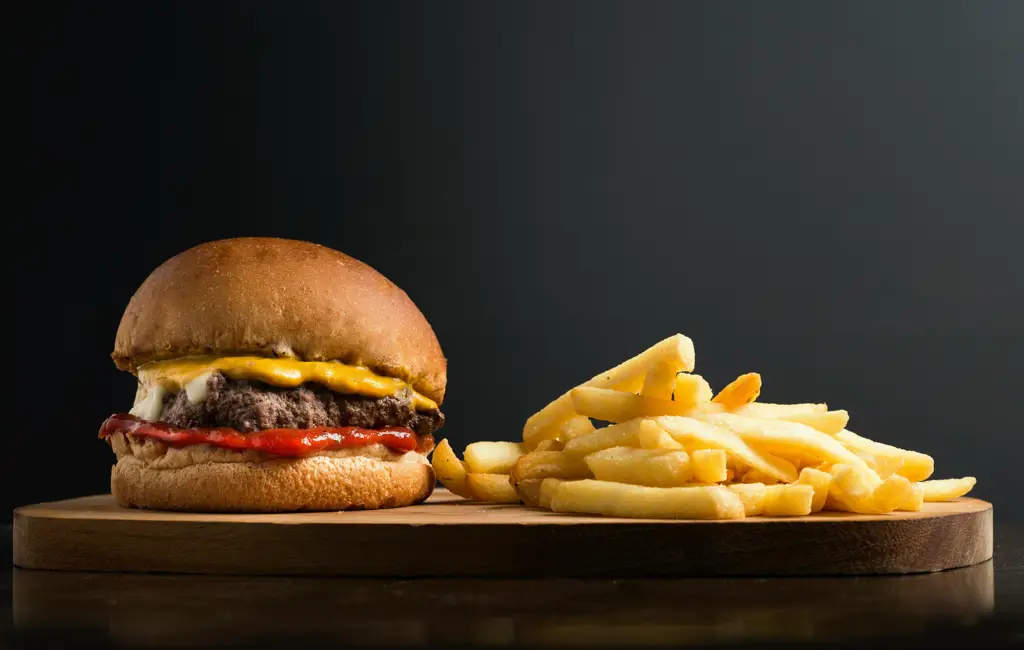Beef Wellington, a culinary masterpiece, is a dish that transcends mere sustenance; it’s a statement of skill and a testament to the enduring appeal of classic French techniques. While its precise origins are debated, the dish’s modern form is widely attributed to the 19th-century British culinary scene, likely emerging from the kitchens of grand estates and prestigious restaurants. The name itself is believed to be a nod to the Duke of Wellington, a prominent figure in British history, although no direct evidence links him to the recipe’s creation. The dish’s association with luxury and sophistication cemented its position as a celebratory centerpiece, often gracing special occasions and high-end menus.
The historical evolution of Beef Wellington is fascinating. Early versions likely involved simpler preparations, possibly omitting the now-iconic duxelles (a finely chopped mushroom paste). The addition of this savory, earthy component significantly elevated the dish, adding depth of flavor and texture. The meticulous process of wrapping the beef in puff pastry, creating that signature golden-brown crust, evolved over time, reflecting the increasing refinement of culinary arts. While precise historical records are scarce, anecdotal evidence and culinary texts suggest a gradual refinement of the recipe, leading to the polished version we know and admire today. Interestingly, the dish’s popularity hasn’t waned; it remains a staple in fine dining establishments globally, showcasing its enduring appeal.
Beef Wellington’s cultural significance extends beyond its elegant presentation. It represents a challenge for home cooks, demanding precision and patience. Successfully creating a Beef Wellington is often viewed as a mark of culinary prowess, a testament to one’s skill in balancing contrasting textures and flavors. It’s frequently featured in cooking competitions and television shows, further cementing its status as a culinary icon. While exact statistics on its global popularity are difficult to obtain, its consistent presence on restaurant menus and its enduring appeal in home kitchens confirm its widespread recognition. The dish’s complexity and the impressive visual result contribute to its enduring allure, making it more than just a meal; it’s an experience.
Beyond its cultural standing, Beef Wellington also holds a certain mystique. The seemingly daunting preparation process, involving multiple steps and careful timing, adds to its appeal. A perfectly executed Beef Wellington boasts a tender, juicy beef center, a flavorful duxelles, and a crisp, flaky pastry crust – a harmonious blend of textures and tastes that is truly unforgettable. This complexity, combined with its association with luxury and celebration, ensures that Beef Wellington will continue to hold a prominent place in the culinary world for years to come. The challenge of mastering this dish only adds to its allure, making it a truly rewarding culinary adventure.
Ingredients and Measurements
Creating the perfect Beef Wellington requires precision in both ingredient selection and measurement. Using high-quality ingredients will significantly impact the final flavor and texture. Don’t skimp on the good stuff!
Beef Tenderloin: You’ll need approximately 1.5 – 2 lbs (680g – 900g) of a high-quality beef tenderloin. Ensure it’s properly trimmed of silver skin and excess fat. A tenderloin that’s too lean can be dry, while one with too much fat will be overly rich. Aim for a tenderloin that’s evenly marbled with fat for optimal juiciness and flavor. Look for a bright red color and firm texture. If buying pre-trimmed, weigh it carefully to ensure you have the correct amount for your recipe.
Duxelles (Mushroom Paste): This is a crucial component. You’ll need approximately 8 ounces (225g) of cremini mushrooms, finely chopped. Avoid using pre-chopped mushrooms as they tend to release excess moisture. You’ll also need 4 tablespoons (60g) of unsalted butter, 1 small shallot, finely minced (about 1 tablespoon), 2 cloves of garlic, minced, 1/4 cup (30g) of fresh thyme leaves, 2 tablespoons of dry sherry (optional, but adds depth of flavor) and salt and freshly ground black pepper to taste. The duxelles should be cooked until very dry; this is key to preventing a soggy Wellington.
Prosciutto or Parma Ham: You’ll need approximately 8-10 ounces (225g-285g) of high-quality prosciutto or Parma ham, thinly sliced. Overlapping the slices is important to ensure complete coverage of the tenderloin. The prosciutto adds a salty, savory element and helps seal in the juices during cooking. Look for prosciutto with a good balance of saltiness and delicate flavor; avoid overly salty options.
Puff Pastry: 1 sheet (14.1 ounces or 400g) of high-quality, all-butter puff pastry, thawed according to package instructions. Using high-quality puff pastry is essential for a flaky, golden crust. Ensure it’s completely thawed and pliable before use; otherwise, it will be difficult to work with and may tear. If your puff pastry sheet is smaller than needed, you can carefully patch it together with a little water.
Egg Wash: 1 large egg, beaten with 1 tablespoon of water. This will create a lovely golden brown finish on the pastry and help it adhere. Don’t skip the egg wash; it’s crucial for both appearance and texture.
Seasoning: Salt and freshly ground black pepper are essential. Use generously to season the beef tenderloin both inside and out. Don’t be shy with the seasoning, as it will enhance the flavor of the beef. You might also consider adding a touch of freshly ground nutmeg to the duxelles for an extra layer of complexity.
Optional additions: Some recipes incorporate a thin layer of pate between the beef and the duxelles for added richness. Consider adding a tablespoon or two of cognac to the duxelles for a richer, more intense flavor profile. Fresh herbs, such as parsley or chives, can be finely chopped and added to the duxelles for an extra layer of flavor and visual appeal.
Beef Preparation (Tenderizing, Seasoning)
The success of Beef Wellington hinges heavily on the quality and preparation of the beef itself. We’ll be using a center-cut tenderloin, known for its tenderness, but even this premium cut benefits from careful preparation. For a 2-pound beef tenderloin, you’ll need to begin by ensuring it’s properly trimmed and at room temperature. This allows for even cooking and prevents shocking the meat during the searing process. Allow at least 30 minutes for the tenderloin to come to room temperature, removing it from the refrigerator approximately one hour before you plan to begin cooking.
Next, we address tenderizing. While a tenderloin is naturally tender, a slight tenderizing can ensure an exceptionally soft and succulent final product. Avoid over-tenderizing, as this can lead to a mushy texture. A simple approach is to use a meat mallet to gently pound the tenderloin to an even thickness of about 1 inch. Work from the center outwards, being careful not to tear the meat. Focus on evening out any thick sections rather than significantly reducing the thickness.
Seasoning is crucial for maximizing flavor. For a 2-pound tenderloin, generously season all sides with 2 teaspoons of kosher salt and 1 teaspoon of freshly ground black pepper. Don’t be shy with the salt; it’s essential for drawing out moisture and enhancing the beef’s natural flavor. You may also consider adding other seasonings such as 1/2 teaspoon of garlic powder and 1/4 teaspoon of onion powder for a more complex flavor profile. Rub the seasonings thoroughly into the meat, ensuring complete coverage. Let the seasoned tenderloin rest for at least 15 minutes to allow the salt to penetrate the meat and begin its magic.
For those seeking extra flavor depth, consider a quick sear before proceeding with the Wellington process. Heat 2 tablespoons of high-heat oil (such as grapeseed or canola) in a heavy-bottomed skillet over high heat until it just begins to smoke. Sear the tenderloin on all sides for approximately 1-2 minutes per side, until a nice brown crust forms. This sear not only adds a delicious crust but also helps to seal in the juices. Be careful not to overcrowd the pan; if necessary, sear the tenderloin in batches. Remove the seared tenderloin from the pan and set aside on a wire rack to cool slightly before proceeding with the next steps of the Wellington preparation.
Professional Tip: If you have access to a vacuum sealer, consider vacuum sealing the seasoned tenderloin for several hours before cooking. This will further enhance the flavor and tenderness by evenly distributing the seasoning and promoting a more tender texture.
Remember that the quality of your beef is paramount. Choose a high-quality, well-marbled tenderloin for the best results. Proper trimming, even tenderizing, generous seasoning, and an optional sear are all key steps in preparing the perfect beef for your Beef Wellington. Following these steps will ensure a succulent and flavorful centerpiece for your meal.
Duxelles Preparation (Mushroom Mixture)
The duxelles is a crucial component of Beef Wellington, contributing both flavor and texture. A well-made duxelles is earthy, intensely flavorful, and provides a delicious counterpoint to the richness of the beef. This recipe uses a combination of mushrooms for a complex and nuanced flavor profile.
Ingredients:
- 1 pound cremini mushrooms, finely chopped (about 3 cups)
- ½ pound shiitake mushrooms, stems removed and finely chopped (about 1 ½ cups)
- 4 tablespoons (½ stick) unsalted butter
- 1 medium shallot, finely minced
- 2 cloves garlic, minced
- 2 tablespoons fresh thyme leaves
- 1 tablespoon fresh parsley, chopped
- ¼ teaspoon freshly grated nutmeg
- Salt and freshly ground black pepper to taste
- 2 tablespoons dry sherry (optional, but adds depth of flavor)
Instructions:
1. Prepare the Mushrooms: Begin by meticulously cleaning the mushrooms. Do not wash them under running water, as this will make them soggy. Instead, use a damp cloth or paper towel to gently wipe away any dirt or debris. Finely chop both the cremini and shiitake mushrooms. Consistency is key here; aiming for a roughly uniform chop will ensure even cooking.
2. Sauté the Aromatics: Melt the butter in a large skillet over medium heat. Add the minced shallot and cook until softened and translucent, about 3-5 minutes. Add the minced garlic and cook for another minute, until fragrant. Be careful not to burn the garlic, as this will impart a bitter taste.
3. Cook the Mushrooms: Add the chopped mushrooms to the skillet. Cook them over medium heat, stirring frequently, until all the moisture has evaporated and the mushrooms are deeply browned and have reduced significantly in volume. This process will take approximately 15-20 minutes. Do not rush this step; proper browning is essential for developing deep umami flavors.
4. Season and Finish: Stir in the thyme, parsley, and nutmeg. Season generously with salt and pepper. If using, add the sherry and cook for another minute or two, allowing the alcohol to evaporate and leave behind its rich essence. Taste and adjust seasoning as needed. The duxelles should be well-seasoned, as it will form the base of flavor for the Wellington.
5. Cool and Use: Once the duxelles is cooked, remove it from the heat and transfer it to a bowl to cool completely. This is crucial, as a warm duxelles will make the pastry soggy. Once cooled, the duxelles is ready to be spread onto the beef before wrapping it in puff pastry.
Professional Tip: For an even richer flavor, consider adding a tablespoon of finely chopped fresh tarragon to the duxelles. The subtle anise notes of tarragon complement the earthiness of the mushrooms beautifully.
Pastry Preparation (Handling Puff Pastry)
The success of your Beef Wellington hinges significantly on the proper handling of the puff pastry. This delicate pastry requires a gentle touch and a cool environment to prevent it from becoming tough or losing its signature flaky layers. For a 2-pound beef tenderloin, you’ll need approximately 1 pound of high-quality, ready-made puff pastry, thawed according to package instructions. Never attempt to use frozen puff pastry directly; it needs time to soften and become pliable.
Once thawed, gently unfold the puff pastry sheet onto a lightly floured surface. Avoid vigorous kneading or stretching, as this will damage the delicate layers of butter within the pastry. If your puff pastry is sticking, use a very light dusting of flour, just enough to prevent it from adhering to the work surface. Too much flour will dry out the pastry and make it tough.
Before rolling, assess the shape of your pastry sheet. It is highly likely that it won’t be perfectly rectangular. You may need to gently trim the edges to achieve a more even shape, ensuring you have enough pastry to completely enclose the beef wellington. Use a sharp knife or pastry wheel for clean cuts, and avoid tearing the pastry which could lead to leakage during cooking.
Rolling the pastry requires a light hand and a cool environment. Work quickly to avoid warming the pastry, which will make it more difficult to handle and affect its rise. If you find the pastry becoming too soft, chill it briefly in the refrigerator for 10-15 minutes before continuing. Roll the pastry gently to a rectangle approximately 18 inches by 12 inches, or large enough to comfortably enclose your prepared beef tenderloin, leaving enough extra pastry to create a neat seal. A slight overlap is better than a tight fit.
Professional Tip: For an even easier rolling process, consider chilling the pastry slightly before rolling. A slightly firmer pastry will be less prone to stretching and tearing.
Once you’ve reached the desired size and shape, carefully transfer the rolled pastry onto a baking sheet lined with parchment paper. Avoid dragging the pastry across the surface, as this can also damage the layers. Gently lift the pastry using a spatula to transfer it to the baking sheet. This ensures that the pastry retains its shape and that the layers remain intact during the final baking stage. Remember, a flawlessly executed puff pastry is the key to a visually stunning and beautifully textured Beef Wellington.
Finally, before adding the beef and duxelles, ensure the pastry is lightly brushed with egg wash. This will create a beautiful golden-brown sheen and help the pastry to seal nicely during baking. A simple egg wash (1 egg lightly beaten with 1 tablespoon of water) is sufficient.
Wellington Assembly: Bringing it All Together
The assembly of your Beef Wellington is a crucial stage, demanding precision and a steady hand. A poorly assembled Wellington can lead to a dry, unevenly cooked, or even raw center. Follow these steps carefully to ensure a perfect result.
Prepare your work surface: Ensure you have a clean, large, flat surface. Lightly dust it with flour to prevent sticking. Have all your components readily accessible: your seasoned and seared beef fillet, duxelles, Parma ham, and puff pastry. Keep your refrigerator nearby for quickly chilling components as needed.
Layering the Parma Ham: Begin by laying out a sheet of cling film on your work surface. Arrange overlapping slices of Parma ham onto the cling film, creating a rectangle large enough to comfortably encase your beef fillet. Aim for at least 6-8 slices of Parma ham, depending on the size of your fillet. The Parma ham acts as both a flavour enhancer and a barrier to prevent the pastry from becoming soggy.
Adding the Duxelles: Spread your prepared duxelles (mushroom paste) evenly onto the Parma ham, leaving a small border (approximately 1cm) around the edges. Ensure the duxelles is spread smoothly and evenly to prevent pockets of uneven cooking. The amount of duxelles should be sufficient to coat the beef fillet but not so much that it overflows. A good guideline is to use about 200g of duxelles for a 1kg beef fillet.
Encasing the Beef Fillet: Carefully place your seared beef fillet in the center of the duxelles. Using the cling film as a guide, gently lift and wrap the Parma ham around the beef fillet, ensuring it’s completely enveloped. Tightly seal the edges of the Parma ham to create a neat, compact package. This is essential for maintaining the shape and preventing the duxelles from escaping during baking.
The Puff Pastry Embrace: Roll out your puff pastry on a lightly floured surface to a rectangle slightly larger than the Parma ham-wrapped beef. Ensure the pastry is rolled evenly to avoid weak points. Carefully lift the beef fillet, still wrapped in cling film, onto the center of the pastry. Using the cling film as a peel, remove the film and gently lift the pastry over the beef, tucking the edges underneath to create a neat, sealed parcel. Crimp the edges firmly to prevent any leakage during cooking.
Egg Wash and Finishing Touches: Brush the entire surface of the pastry with an egg wash (1 egg beaten with a tablespoon of milk). This will give your Wellington a beautiful golden-brown finish. You can optionally score the top of the pastry with a sharp knife, allowing steam to escape and creating a decorative effect. Do not cut too deeply, as this can compromise the structural integrity of the pastry.
Chilling Before Baking: Once assembled, your Beef Wellington must be chilled in the refrigerator for at least 30 minutes, preferably an hour. This allows the pastry to firm up and prevents it from shrinking or collapsing during baking. This chilling step is critical for a successful Wellington.
Cooking the Wellington (Oven Temperature, Timing)
Cooking a Beef Wellington perfectly requires precision and attention to detail. The goal is to achieve a beautifully browned, crisp pastry crust while ensuring the beef inside is cooked to your desired level of doneness. This section will guide you through the process, focusing on oven temperature and cooking time.
Preheat your oven to 400°F (200°C). This high initial temperature is crucial for achieving a beautifully golden-brown crust. A lower temperature will result in a soggy pastry. Ensure your oven is fully preheated before placing the Wellington inside; use an oven thermometer for accuracy.
Cooking time depends heavily on the size and thickness of your beef tenderloin. A standard 2-pound tenderloin will generally take between 25-35 minutes. However, this is just a guideline. For larger or smaller tenderloins, you’ll need to adjust accordingly. Always use a meat thermometer to ensure the beef reaches your preferred internal temperature.
For medium-rare (130-135°F or 54-57°C), aim for approximately 25-30 minutes. For medium (135-140°F or 57-60°C), increase the cooking time to 30-35 minutes. For medium-well (140-145°F or 60-63°C), you’ll likely need 35-40 minutes. Remember that the Wellington will continue to cook slightly after being removed from the oven due to residual heat, so it’s crucial to remove it slightly before it reaches your target temperature.
To prevent overcooking, it’s recommended to tent the Wellington loosely with aluminum foil after about 20 minutes of cooking. This helps to regulate the temperature and prevent the pastry from burning before the beef is cooked through. Observe the Wellington carefully; you may need to remove the foil earlier or later depending on your oven and the size of your Wellington.
Resting the Wellington is just as important as cooking it. Once the desired internal temperature is reached, remove the Wellington from the oven and let it rest for at least 10-15 minutes before slicing and serving. This allows the juices to redistribute throughout the meat, resulting in a more tender and flavorful final product. Resting also allows the pastry to firm up slightly.
Using a meat thermometer is essential. Don’t rely solely on visual cues or timing estimations. Insert the thermometer into the thickest part of the beef, ensuring it doesn’t touch the bone (if applicable), to get an accurate reading. This will prevent undercooked or overcooked beef and ensure a perfectly cooked Wellington every time.
Troubleshooting: If the pastry is browning too quickly, reduce the oven temperature slightly or tent it with foil. If the pastry is browning unevenly, rotate the Wellington halfway through the cooking time. If the beef is cooking too slowly, increase the oven temperature slightly, but monitor closely to prevent burning.
Remember: Oven temperatures can vary, so always monitor your Wellington closely and adjust cooking times as needed based on your oven and the size of your tenderloin. Practice makes perfect, so don’t be discouraged if your first attempt isn’t flawless. With experience, you’ll master the art of cooking the perfect Beef Wellington.
Recommendations for the Perfect Beef Wellington
To achieve the perfect Beef Wellington, meticulous preparation is key. Ensure your beef tenderloin is completely dry before searing; this promotes a beautiful crust and prevents steaming during cooking. Patting it dry with paper towels is crucial. Similarly, allow the Wellington to rest for at least 15-20 minutes after cooking before slicing. This allows the juices to redistribute, resulting in a more tender and flavorful final product. Cutting into it too soon will release all the delicious juices, leaving you with a dry Wellington.
The quality of your ingredients significantly impacts the final result. Use high-quality beef tenderloin, preferably one that’s well-marbled for optimal tenderness and flavor. Choose fresh, flavorful mushrooms for the duxelles, and don’t skimp on the butter! The richness of the butter enhances the overall flavor profile. Invest in good quality puff pastry; its flakiness is essential to the Wellington’s appeal. If making your own puff pastry, ensure it’s properly chilled before use.
Proper temperature control is paramount. Use a meat thermometer to ensure the beef reaches your desired level of doneness. For medium-rare, aim for an internal temperature of 130-135°F (54-57°C). Overcooking will result in a tough and dry Wellington. Adjust baking time depending on the size of your Wellington and your oven’s temperament. It’s always better to slightly underbake and let it rest to finish cooking. Consider using an oven thermometer to ensure accuracy.
Serving Suggestions: Beef Wellington is a luxurious dish best served on a special occasion. Slice it into thick medallions and arrange them on a platter. A simple garnish of fresh parsley sprigs elevates the presentation. Consider serving it with a classic red wine reduction sauce, a rich mushroom gravy, or a vibrant green peppercorn sauce. These sauces complement the richness of the beef and the earthy notes of the duxelles.
Complementary Dishes: To balance the richness of the Wellington, pair it with lighter side dishes. Roasted asparagus, sautéed green beans, or a simple salad with a light vinaigrette all provide a refreshing contrast. Creamy mashed potatoes or dauphinoise potatoes offer a comforting and delicious accompaniment. A selection of crusty bread is also recommended for soaking up the delicious juices.
Storage: Leftover Beef Wellington can be stored in the refrigerator for up to 3 days. Allow it to cool completely before wrapping it tightly in plastic wrap and then aluminum foil. Reheat gently in a low oven or microwave until warmed through. Do not refreeze.
Nutritional Information (Approximate per serving, 100g): The nutritional content will vary based on the specific ingredients and portion size. However, a typical serving of Beef Wellington contains a high amount of protein and fat. Expect a calorie count of approximately 350-450 calories per 100g serving. The exact macronutrient breakdown (protein, fat, carbohydrates) will depend on the recipe and ingredients used. It’s recommended to use a nutrition calculator with your specific recipe ingredients for a more accurate assessment.
Important Note: These recommendations are guidelines. Experiment with different flavors and techniques to find your perfect Beef Wellington. Don’t be afraid to adjust the recipe to your liking!





